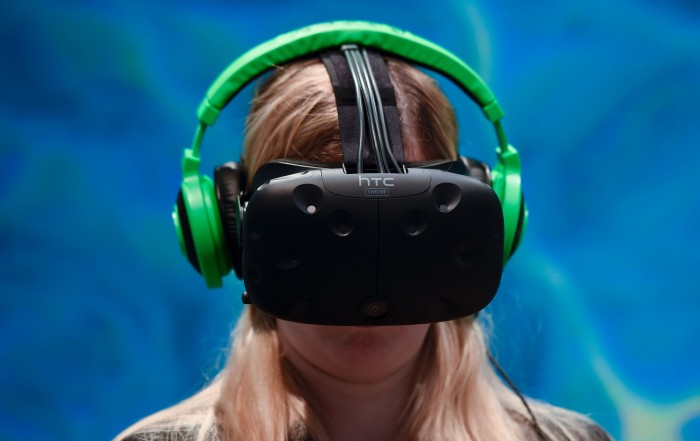Sound Makes Virtual Reality a More Powerful Painkiller
Researchers have believed for a while that virtual reality can be used to help control the pain you might feel while having a wound cared for or visiting the dentist, and a new study indicates that hearing sound while you’re seeing immersive images is a key part of making this work.
Researchers at York St. John University in the U.K. say that they came to this conclusion after having a group of adults hold one hand in ice water as long as possible while playing a virtual reality game on an Oculus developer headset with and without sound.
The researchers found that people who played a racing game while hearing the sounds that went with it could tolerate the discomfort the longest, about 79 seconds. When they held a hand in ice water with virtual reality visuals but no sound, they lasted about 56 seconds. Both times the participants held a hand under water for much more time than when they tried to do so without using any VR at all—then, they lasted just an average of 30 seconds.

The ice-water tolerance when using sound and VR images versus just viewing VR images was much greater than expected, says Matt Coxon, a senior lecturer at York St. John and coauthor of a paper on the work published Wednesday in the Royal Society Open Science journal.
Until recently, the idea of using virtual reality to help with pain management would have been limited to hospitals and research labs that could afford to get pricey equipment. But with the release of much cheaper mass-market virtual-reality devices like Samsung’s Gear VR headset and Oculus’s just-released Rift, Coxon and some other researchers are hopeful that the technology will soon start to be used more widely—you might go to the dentist and pop on an Oculus Rift before having a cavity filled, for instance.
“I think any scenario, really, where you’re undergoing a short amount of pain in a clinical setting could potentially benefit,” Coxon says.
Sam Sharar, a professor of anesthesiology and pain medicine at the University of Washington who studies how virtual reality can be used to control pain, says the assumption has long been that patients have a fixed amount of conscious attention. If you’re feeling pain, using virtual reality at the same time can help divert conscious attention away to something more pleasurable, and it makes sense that audio would help make the experience even more immersive.
And Houman Danesh, director of integrative pain management at Mount Sinai Hospital in New York, agrees that engaging the mind in an activity does result in people feeling less pain. But given the limited scope of the study, which analyzed data from 27 healthy adults in their 20s, most of them women, he’s not sure how this research would apply to other kinds of people with other kinds of pain.
“The cold-water temperature test is a good analogy, but we don’t know if it will cross over to real-world implications,” he says.
Keep Reading
Most Popular
Large language models can do jaw-dropping things. But nobody knows exactly why.
And that's a problem. Figuring it out is one of the biggest scientific puzzles of our time and a crucial step towards controlling more powerful future models.
How scientists traced a mysterious covid case back to six toilets
When wastewater surveillance turns into a hunt for a single infected individual, the ethics get tricky.
The problem with plug-in hybrids? Their drivers.
Plug-in hybrids are often sold as a transition to EVs, but new data from Europe shows we’re still underestimating the emissions they produce.
Stay connected
Get the latest updates from
MIT Technology Review
Discover special offers, top stories, upcoming events, and more.